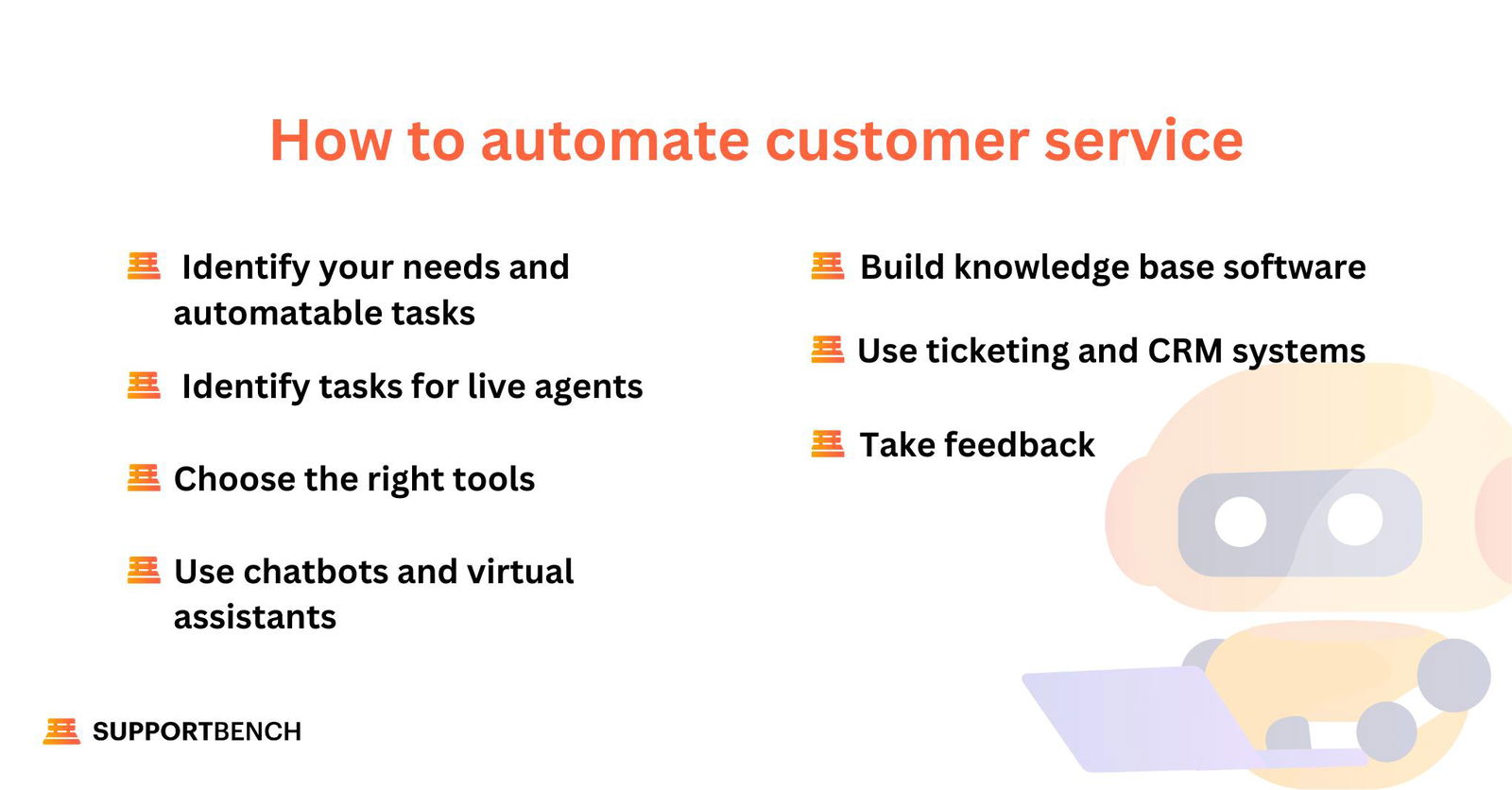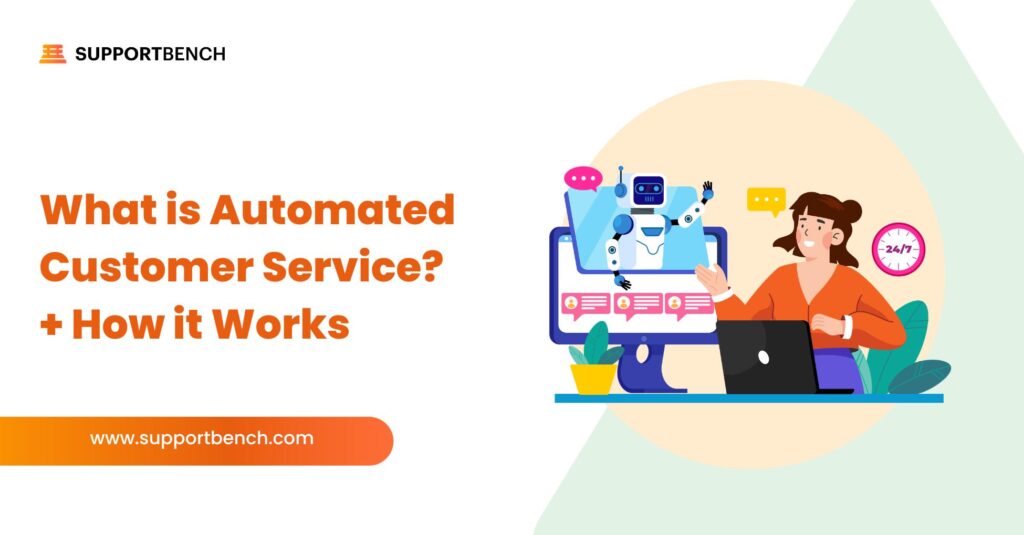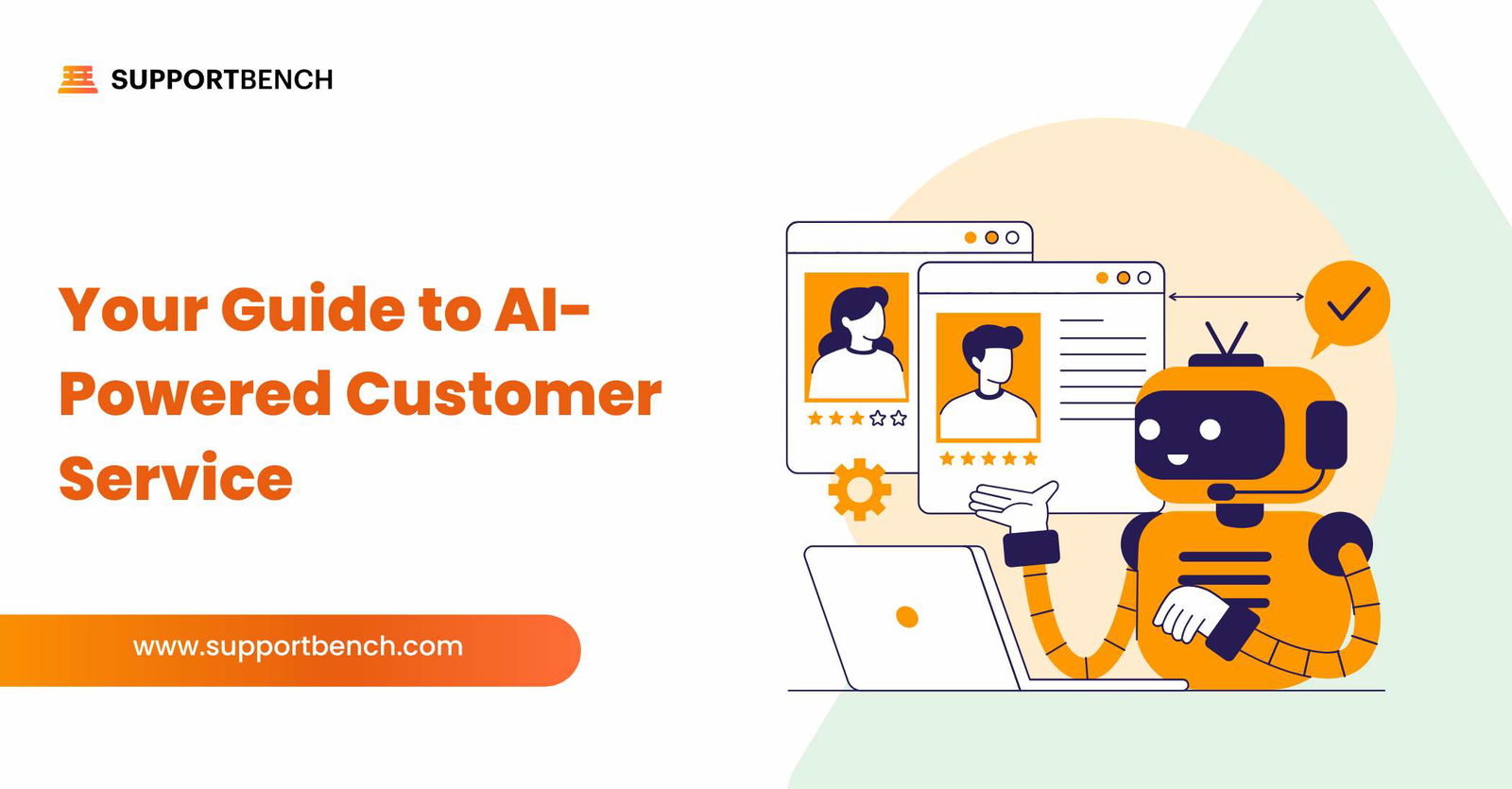Long wait times and endless email threads with support reps are a thing of the past. Companies now use advanced technology, including artificial intelligence (AI), help desk software, chatbots, and self-service portals, to automate customer service and provide 24/7 support.
Automated customer service enables support teams to handle more tasks efficiently by automating repetitive processes and streamlining communication. As customers increasingly seek faster, more personalized service, automation enhances their experience, optimizes support operations, and reduces costs.
The Role of Automated Customer Service in Business Growth?
Business automation streamlines operations, including customer service. Automated customer support reduces the need for human assistance with common questions, freeing your team to focus on complex issues.
As your business expands, so does the demand for support. Customer service automation offers a cost-effective way to handle this growth. Tools like live chatbots, AI-powered self-service portals, automated email responses, and interactive voice response (IVR) enhance your support capabilities.
These tools often integrate into a broader CRM automation strategy, aimed at boosting sales and improving customer interactions.

How does automated service work?
Automated customer service uses technology—often powered by AI and machine learning—to manage and streamline interactions, minimizing the need for human agents. Here’s an example of how it works:
Imagine a customer has an issue with an electronic product they purchased from your company. It won’t turn on. Through automated customer service, they can find a solution. Here’s how: The customer visits your website’s support page. AI customer support greets them and prompts a description of the issue.
The chatbot recognizes ‘won’t turn on’ and directs the customer to an article in your knowledge base. The article advises them to check for a plastic tab in the battery slot. Realizing they missed this step, the customer removes the tab, and the device works.
But what if the problem is more serious, like a defective product? It’s after hours, so no live agents are available. Fortunately, automated customer service still assists.
If the AI chatbot can’t solve the problem, it prompts the customer to email your support team. The customer sends an email and receives an automatic reply confirming a support ticket has been created.
When your team returns, a support agent reviews the ticket. Thanks to the integration between the chatbot and your ticketing system, the agent sees the customer has already tried basic troubleshooting steps. The agent then contacts the customer, confirms the product defect, and promptly processes a replacement.
How to automate customer service?
Automating customer service means using technology to streamline interactions, allowing customers to find solutions with minimal assistance. Here’s a guide to setting up automated customer support:

Identify your needs and automatable tasks
Start by defining automation needs in customer service, prioritizing areas with the highest impact. For instance, if calls dominate, an interactive voice response (IVR) system can help, but consistent support across all channels is essential for a unified experience.
Choose agile, feature-rich software that adapts to customer demands. For example, adding an effective AI chatbot might increase live chat usage, so integrated software ensures agents are available where demand is highest.
Identify simple, high-volume tasks for automation, such as greeting customers, gathering data, password resets, account verification, troubleshooting, and ticket routing. The right software seamlessly integrates these tasks to boost efficiency.
Identify tasks for live agents
Some tasks are best handled by live agents. These may include:
- Engaging with customers who prefer phone calls
- Addressing complex support issues
- Onboarding new customers
- Assisting with upgrades and cancellation requests
By automating routine tasks, live agents can focus on interactions that require a human touch.
Choose the right tools
Selecting the right tools is key to successful automation. Consider your business needs, budget, and desired level of automation. Look for user-friendly tools that integrate with existing systems.
Your customer service software should scale with your business, handling more interactions as demand grows. Essential features include natural language processing, sentiment analysis, multi-channel support, and reporting.
Use chatbots and virtual assistants
AI chatbots handle common questions and refer complex issues to human agents. Platforms like Supportbench offer customizable chatbot options.
When selecting a chatbot, look for features like natural language processing, personalization, and integration capabilities. Ensure the chatbot can manage both simple and complex inquiries, or consider AI-powered virtual assistants for advanced needs.
Build knowledge base software
A knowledge base allows customers to find answers independently, reducing workload for support teams and allowing agents to focus on complex issues. Include FAQs, how-to guides, and troubleshooting articles.
Consider adding downloadable guides or infographics for offline access. You might also enable a community forum for customer interactions and shared solutions.
Use ticketing and CRM systems
Automated ticketing systems, like Supportbench, help organize, prioritize, and assign tickets, ensuring prompt attention to all requests.
A ticketing system can generate tickets from emails, chats, and social media, so nothing is overlooked. Set rules to route tickets to the appropriate agent or team for faster resolution.
Keep customers informed with automatic responses and updates. Integrating your ticketing system with CRM software also provides a complete record of customer interactions.
Take feedback
Automation requires adjustment. Regularly test your system and collect feedback from both customers and employees. This feedback process helps customers feel valued and supports continuous improvement in your automated service.

What are the benefits of automated customer service?
The advantages of automated customer service include:
- Efficient handling of routine tasks, which reduces response times and allows agents to focus on more complex issues.
- Lower staffing needs, as automation manages high volumes of simple inquiries.
- 24/7 availability, enabling customers to resolve issues anytime, even outside regular business hours.
- Consistent and accurate responses, ensuring customers receive reliable information across all interactions.
- Reduced wait times and faster resolution of common issues, creating a more satisfying overall experience.”
What are the disadvantages of automated customer service?
Drawbacks of customer service automation include:
- Lack of empathy, as automated systems cannot match the personal touch of human agents, potentially making customers feel undervalued.
- Difficulty with nuanced language or unique questions, which can result in unresolved issues.
- Limited capacity for complex problems, as these often require human insight.
- Challenges in handling unexpected situations, where human adaptability excels.
- Risks of system glitches or outages, which can disrupt service.
- Frustration from repetitive automated loops without access to human assistance, negatively impacting brand perception.
Conclusion
Automated customer service offers a strategic advantage to businesses aiming to improve support operations, reduce response times, and deliver a consistent, seamless customer experience. Success in automation requires the right tools and a balanced approach that combines efficiency with a human touch.
Supportbench provides a unified platform designed to meet these needs, equipping support teams with tools for ticket management, workflow automation, and proactive insights.
By choosing Supportbench, companies can streamline their support processes, boost customer satisfaction, and cultivate lasting relationships—setting the foundation for long-term success in customer service. Discover how Supportbench can elevate your support experience and keep you competitive in today’s evolving customer service landscape.












